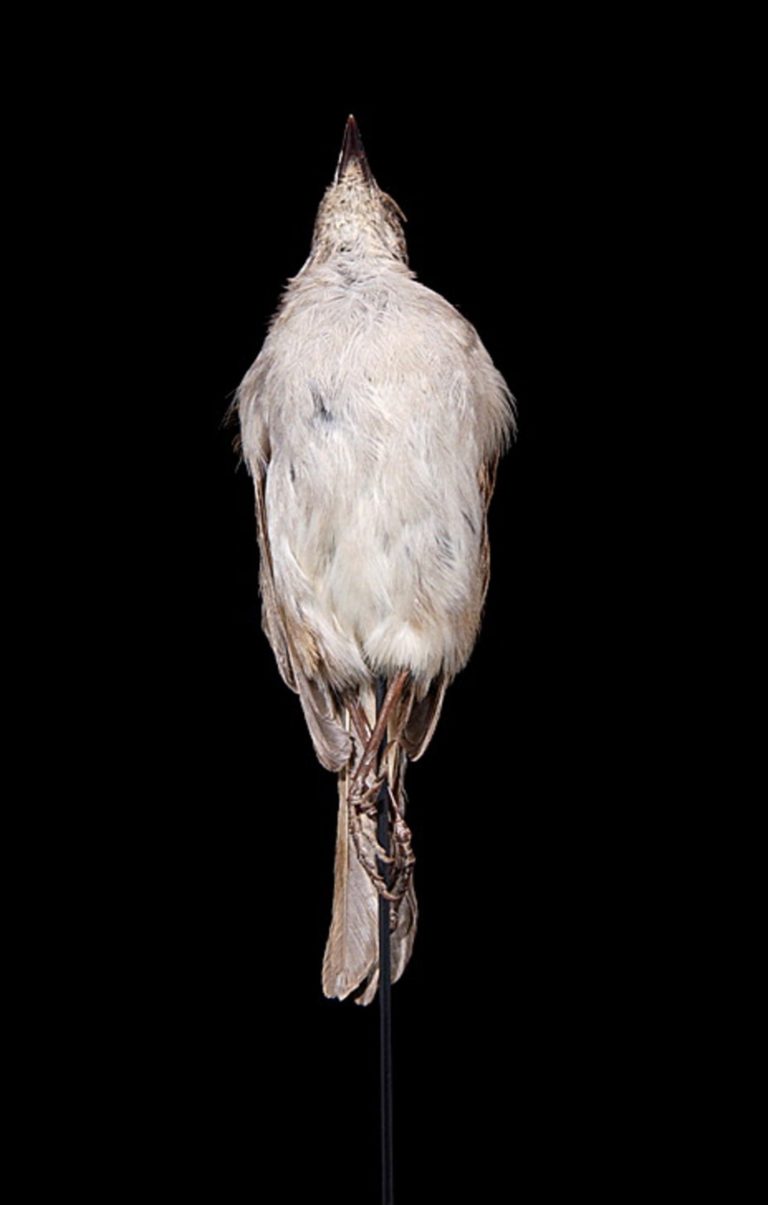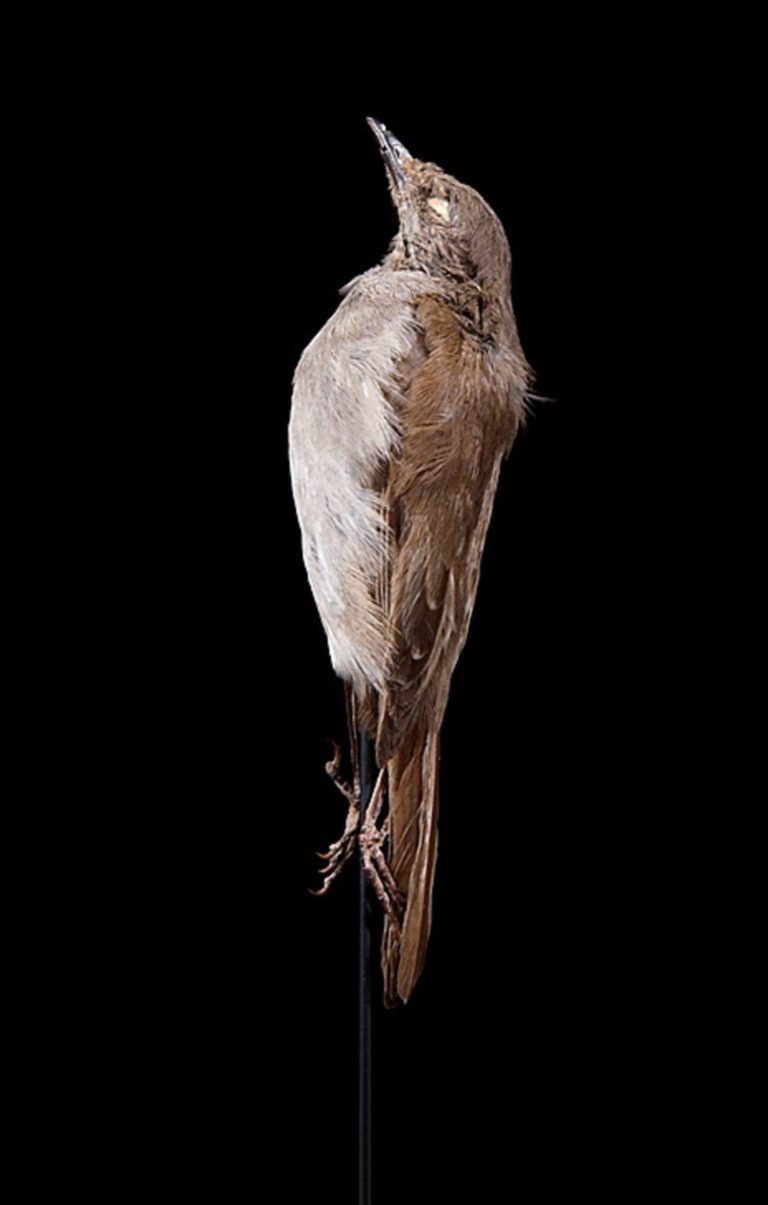Birdfinding.info ⇒ The last documented observations of Oloma’o occurred in 1980, when three were observed on the Olokui Plateau in eastern Molokai, between Wailau and Pelekunu Valleys. During the previous summer two had been seen at Pu’u Waha’ulu. It seems clear that a small population persisted until at least 1980, and likely beyond. The Olokui Plateau is remote and apparently has not been surveyed since 1980, so it is conceivable that the Oloma’o still survives there. Reports from the Kamakou Preserve in 1988, 1994, and 2005 have not been widely accepted.
Oloma’o †
Myadestes lanaiensis
Endemic to Molokai and Lanai, but presumed to be extinct.
It remained numerous on both islands until the 1920s or so, then suddenly declined, likely due to avian malaria. It is believed to have been extirpated from Lanai around 1930, and survived on Molokai until at least 1980, possibly for several years longer, conceivably to the present day.
Identification
A typical Myadestes solitaire with brown upperparts and pale-gray underparts.
The immature plumage was brown with paler spots.

Oloma’o, ventral view. (Specimen ID: RMNH.AVES.110026; Lanai, Hawaii.) © Naturalis Biodiversity Center

Oloma’o, side view. (Specimen ID: RMNH.AVES.110026; Lanai, Hawaii.) © Naturalis Biodiversity Center

Oloma’o, dorsal view. (Specimen ID: RMNH.AVES.110026; Lanai, Hawaii.) © Naturalis Biodiversity Center
Notes
Polytypic species consisting of two recognized subspecies. Traditionally considered conspecific with the Kama’o (M. myadestinus), Amaui (M. woahensis), and Oma’o (M. obscurus), collectively known as the Hawaiian Thrush (M. obscurus), but recognized as separate species since 1982. Sometimes also considered conspecific with just the Amaui, but genetic analyses of relatedness reportedly support treatment as a separate species.
IUCN Red List Status: Critically Endangered (Possibly Extinct).
References
BirdLife International. 2019. Myadestes lanaiensis. The IUCN Red List of Threatened Species 2019: e.T22708574A155254449. https://dx.doi.org/10.2305/IUCN.UK.2019-3.RLTS.T22708574A155254449.en. (Accessed June 13, 2020.)
Collar, N., and C.J. Sharpe. 2020. Olomao (Myadestes lanaiensis). In Handbook of the Birds of the World Alive (J. del Hoyo, A. Elliott, J. Sargatal, D.A. Christie, and E. de Juana, eds.). Lynx Edicions, Barcelona. https://www.hbw.com/node/58233. (Accessed May 10, 2020.)
Hume, J.P. 2017. Extinct Birds (Second Edition). Bloomsbury Publishing PLC, London.
Pratt, H.D., P.L. Bruner, and D.G. Berrett. 1987. A Field Guide to the Birds of Hawaii and the Tropical Pacific. Princeton University Press.
Pratt, H.D. 1993. Enjoying Birds in Hawaii: A Birdfinding Guide to the Fiftieth State (Second Edition). Mutual Publishing, Honolulu, Hawaii.
Pyle, R.L., and P. Pyle. 2017. The Birds of the Hawaiian Islands: Occurrence, History, Distribution, and Status. Version 2 (January 1, 2017). http://hbs.bishopmuseum.org/birds/rlp-monograph/. B.P. Bishop Museum, Honolulu, Hawaii.
